Relationships are an integral part of our lives. They provide a sense of belonging, offer love and support, and enrich our experiences. However, not all relationships are healthy. Sometimes, we find ourselves in toxic relationships that drain us emotionally and may even have negative effects on our physical well-being. The ability to recognize and avoid such toxic relationships is crucial for our emotional and mental health. This comprehensive guide provides insights into the nature of toxic relationships, signs to recognize them, their potential impact, strategies to avoid them, real-life case studies, and steps towards recovery. Our focus is to equip you with the knowledge and tools needed to navigate away from toxicity and towards healthier, more fulfilling relationships.
Table of Content
- Recognizing Toxic Relationships
- The Effects of Toxic Relationships
- Avoiding Toxic Relationships
- Real-life Case Studies
- Recovery and Moving On
- Conclusion
Recognizing Toxic Relationships
Recognizing toxic relationships can be challenging, especially when you’re in the midst of one. By definition, a toxic relationship is one that consistently drains your emotional energy and creates negativity. These relationships are often characterized by patterns of abuse or neglect and are usually marked by constant conflict, excessive control, or persistent negativity.

However, the indicators of toxicity aren’t always overt. Toxic relationships often operate under the guise of love or care, making it difficult for the victims to understand that they’re in one. The first step towards avoiding such relationships is recognizing the signs. These include:
- Consistent Negativity: In a toxic relationship, interactions are often filled with negativity. This could manifest as constant criticism, belittlement, or contempt. These behaviors can chip away at your self-esteem and affect your overall well-being.
- Gaslighting: This is a form of psychological manipulation where the abuser causes the victim to doubt their memory, perception, or sanity. For instance, they might deny that certain events occurred or accuse the victim of overreacting. Gaslighting can lead to the victim feeling confused and insecure about their judgment.
- Excessive Control and Dominance: A common sign of a toxic relationship is when one person excessively controls or dominates the other. This could manifest in various ways, from controlling the victim’s social interactions to making decisions on their behalf without their consent. Such control is often justified as concern or care, making it difficult for the victim to recognize it as a sign of toxicity.
Remember, a single instance of these behaviors does not necessarily signify a toxic relationship. However, if these behaviors persist or form a pattern, it’s a red flag that should not be ignored.
The Effects of Toxic Relationships
Toxic relationships don’t just cause emotional pain; they can also have serious mental and physical health repercussions. The constant stress and negativity can lead to various health issues, affect your social interactions, and interfere with your personal growth.

- Mental Health: Mental health problems like anxiety, depression, and post-traumatic stress disorder (PTSD) are common among people who’ve been in toxic relationships. The negative experiences can trigger these conditions, especially if they’re prolonged or severe.
- Physical Health: The chronic stress from being in a toxic relationship can lead to physical health issues like insomnia, high blood pressure, and even heart disease. The body’s response to chronic stress, known as the ‘fight or flight’ response, can have a toll on physical health if activated repeatedly or for extended periods.
- Social Consequences: Toxic relationships often lead to social isolation as the person involved may pull away from friends and family or may be controlled by their toxic partner to the point where their social interactions are severely limited.
- Impact on Personal Growth: Being in a toxic relationship can hinder personal growth. The negative experiences can make it difficult for the victim to focus on their personal goals or maintain their interests, leading to a reduced sense of self-worth and accomplishment.
Avoiding Toxic Relationships
The best way to deal with toxic relationships is to avoid getting into them in the first place. This may sound easier said than done, especially since people who create toxic environments are often good at manipulation and can be charming at first. However, there are ways to protect yourself.

- Recognize the Signs: Knowledge is power. Knowing the signs of toxic relationships can help you avoid them. If a potential partner displays any of the signs discussed above, it’s a clear red flag. Don’t ignore these signs in the hope that things will get better with time. More often than not, they don’t.
- Establish Boundaries: Setting boundaries is crucial in avoiding toxic relationships. Boundaries are like invisible lines that we draw around ourselves to protect our mental, emotional, and physical space. They can range from what you’re comfortable discussing, how you want to be treated, to how much time you’re willing to spend with the other person. If a person consistently disrespects your boundaries, it’s a sign of toxicity.
- Trust Your Instincts: Sometimes, you may feel something is off in a relationship even if you can’t put your finger on it. This is your instinct talking. Our instincts are the result of our subconscious picking up on patterns or signals that our conscious mind might have missed. If your gut feeling tells you something is wrong, it’s worth taking a closer look.
Real-life Case Studies
Let’s explore three case studies that provide further insight into the nuances of toxic relationships.

Case Study 1: Emotional Manipulation
Emily and John had been dating for several months. Emily often felt guilty and confused after their arguments because John would always twist her words, making her feel responsible for the fights. He constantly accused her of overreacting and being too sensitive. This is a classic example of gaslighting, where the abuser manipulates the situation to make the victim question their own perception and sanity. Emily sought help from a counselor, who helped her identify this toxic pattern. She confronted John and eventually decided to leave the relationship when the behavior persisted.
Case Study 2: Excessive Control
Mark was always a social butterfly, but this drastically changed when he entered a relationship with Sara, which soon turned into one of those toxic relationships he had heard about but never experienced. Sara would constantly check his phone, dictate who he could hang out with, and would get upset if he didn’t spend all his free time with her. She framed these actions as concern and care for Mark, effectively masking the toxicity of her actions. Over time, Mark found himself isolated from his friends and family. It was only after a friend pointed out Sara’s controlling behavior that Mark realized he was indeed in a toxic relationship. With his friend’s support and professional help, he confronted Sara and managed to safely exit the relationship.
Case Study 3: Consistent Negativity and Criticism
Alice and Richard were colleagues before they started dating. In the beginning, their relationship seemed perfect. However, over time, Richard became increasingly critical of Alice. He belittled her achievements, constantly compared her to others, and rarely had anything positive to say about her. Alice’s self-esteem plummeted, and she began to believe that she wasn’t good enough. Recognizing the toll the relationship was taking on her mental health, Alice sought therapy. Her therapist helped her identify the toxic patterns in her relationship and supported her through the process of ending it.
Recovery and Moving On
Escaping a toxic relationship is only the first step towards healing. Recovery can be a long and challenging journey, but it’s certainly possible and within reach. Taking care of your mental health, seeking professional help, and establishing a supportive network are key elements in this process.

- Therapy and Counseling: Professional help can be instrumental in the healing process. Mental health professionals can provide strategies to deal with the emotional turmoil, help regain lost self-esteem, and guide you towards healthier patterns in relationships.
- Support Network: Having a strong support network can significantly facilitate recovery. Surround yourself with people who uplift you, respect your boundaries, and provide a safe space for you to express your feelings.
- Self-Care: It’s crucial to take care of your physical health while you heal. Regular exercise, a healthy diet, and sufficient rest can improve your mood and energy levels, aiding the overall healing process.
- Personal Growth: Use this time to explore new interests, set personal goals, and work towards achieving them. Engaging in activities that you love can help rebuild your sense of self-worth and provide a positive focus for your energy.
Conclusion
Toxic relationships can cause significant damage, but recognizing the signs can help avoid them, and recovery is certainly possible. Remember, everyone deserves to be in a relationship where they feel respected, loved, and valued. By understanding the nature of toxic relationships and how to avoid them, we can pave the way for healthier, more fulfilling relationships.








Leave a Comment